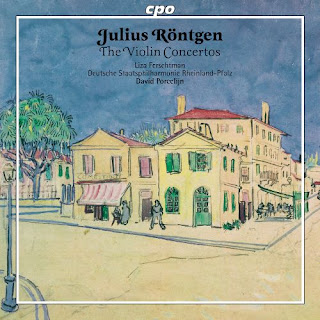
One of the most exciting young artists to emerge in recent years,
Martina Filjak is garnering international praise for her poetic passion
and technical mastery at the keyboard as well as for her charismatic
personality and magnetic stage presence.
Martina Filjak came to international attention by winning the Gold
Medal, the 1st prize and the Beethoven prize at the Cleveland
International Piano Competition in 2009, which brought her numerous
engagements in the United States and internationally. Prior to that, she
won 1st prizes at the Maria Canals Piano Competition (Barcelona) and
the Viotti Piano Competition (Vercelli), and was a laureate at the
Busoni Piano Competition.
In recent years, Ms Filjak has performed with esteemed orchestras
including The Cleveland Orchestra, San Diego Symphony Orchestra, The
Florida Orchestra, the Strasbourg Philharmonic, Barcelona Symphony,
Bilbao Symphony and the Granada Symphony; the Deutsche Radio
Philharmonie, the Staatskapelle Weimar; the Israel Chamber Orchestra as
well as the Orchestre Symphonique de Nancy. She has been heard in major
international venues such as the Concertgebouw Amsterdam, Konzerthaus
Berlin, l’Auditori and Palau de la Música Catalana in Barcelona, Zankel
Hall at Carnegie Hall in New York, Boston’s Jordan Hall, Teatro San
Carlo in Naples, Sala Verdi in Milan, Salle Gaveau in Paris, Musikverein
and the Konzerthaus in Vienna, NDR Hall in Hannover, Residenz in
Munich, Auditorio Nacional in Madrid.
Her most recent conductor collaborations include JoAnn Falletta,
Michael Schonwandt, Christoph Poppen, Hans Graf, Sebastian Lang–Lessing,
Josep Caballe-Domenech, Tito Munoz, Christopher Warren-Green and Stefan
Sanderling.
The artist’s extensive repertoire ranges from Bach to Berio and
encompasses more than 30 piano concertos.
She is dedicated to continuous exploring of piano literature and various concert formats. Performing
with orchestra takes the biggest part of her time and she frequently
states that she enjoys the interaction and the exchange of energy
between so many musicians on the stage.
An avid chamber musician, she frequently takes part in chamber
music festivals, and has participated in the recording of Schumann's
Andante and Variations with cellists Jan Vogler and Christian Poltera,
released on Sony Classical (August 2013). Her recording of Sonatas by
Padre Antonio Soler was released in 2011 on the Naxos label.
During the 2014-2015 season, Miss Filjak appears in Brazil and
Japan and performs with the Osaka Century Symphony Orchestra and Alan
Buribayev, the Slovenian Philharmonic and Marcelo Lehninger, the
Sinfonieorchester Aachen and Kazem Abdullah, the Zagreb Philharmonic and
Hans Graf. She debuts with the Orchestra Sinfonica La Verdi in Milano
as well as at Milan's Serate Musicali. Upcoming performances in 2015-16
feature her with the Staatskapelle Halle and Josep Caballe Domenech, the
Bremen Philharmonic Orchestra and Markus Poschner, the Bilkent Symphony
Orchestra and Stefan Sanderling, the Phoenix Symphony and Tito Munoz
the San Antonio Symphony and Karina Canellakis, the Las Vegas
Philharmonic and Donato Cabrera, and the Pro Musica Chamber Orchestra
and David Danzmayr in performances of concerti by Beethoven, Ravel,
Brahms, Saint-Saens and Rachmaninov.
Martina speaks seven languages. Fortunately, for an active performer, she loves to travel.
































